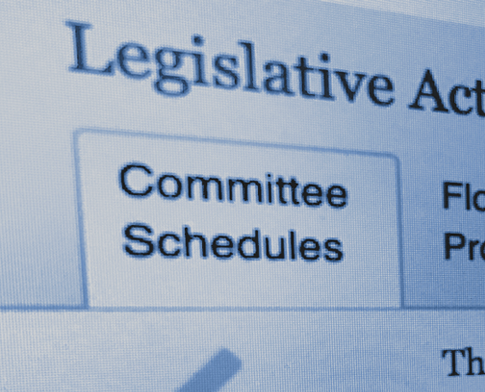Tax Update (October 16)
OECD Releases Pillar One ‘Blueprint’ for Global Digital Tax
On Wednesday (Oct.9), the Organisation for Economic Cooperation and Development (OECD) released a proposal for Pillar One of the Programme of Work (PoW) adopted by the Inclusive Framework on BEPS in May 2019. Pillar One outlines the Secretariat Proposal for a “unified approach” while addressing the creation and allocation of taxing rights in the digital economy. The OECD was careful not to target U.S. specific tech companies, like Google and Facebook, as certain unilateral digital tax proposals have. Instead, the proposal focuses on “consumer-facing firms” that have a significant and sustained presence in the market.[1] The report proposes creating a new taxing right that is no longer dependent upon the existence of a physical presence in the user/market jurisdiction. Such a taxing right would involve the creation of a new nexus, based largely upon a business’ sustained involvement in the market jurisdiction though consumer interaction and engagement. The proposal notes the simplest way to measure a business’ involvement would be to define a revenue threshold within the market. In addition to a new taxing right and nexus, the report also recommends a new profit allocation rules which would go beyond the Arm’s Length Principle while retaining current transfer pricing rules based on this principle where they are working. The report also establishes a three tier mechanism in which businesses can operate. The mechanism aims to establish tax certainty for taxpayers and tax administrations. “This is a sketch of a blueprint of a new architecture,” said Pascal Saint-Amans, head of tax at the OECD’s Centre for Tax Policy and Administration.[2] The OECD is accepting comments from interested parties on the proposal through Tuesday, Nov 12, 12:00pm GMT+2. A public consultation meeting on Pillar One’s ‘unified approach’ will be held at the OECD Conference Centre in Paris, France, on November 21-22. Expect to see the report on Pillar Two released in early November.
IRS Guidance on Cryptocurrency
This week, the Internal Revenue Service (IRS) released new guidance to help taxpayers who engage in transactions involving virtual currency understand reporting obligations. Revenue Ruling 2019-24 addresses the tax treatment of “hard forks,” which occur when cryptocurrency on a distributed lever undergoes a shift, and can lead to the creation of a new cryptocurrency. The ruling addresses cryptocurrency in which no new cryptocurrency is received by the owner of the original cryptocurrency from an “airdrop” following the hard fork. The ruling also addresses the tax treatment of cryptocurrency hard forks that are followed by an airdrop of units of a new cryptocurrency to owners of the original cryptocurrency. The rule provides that a hard fork not followed by an airdrop of new units does not result in gross income to owners of the original cryptocurrency. However, a hard fork followed by an airdrop of new units does result in ordinary income to the recipients of units of new cryptocurrency from the airdrop at the time the taxpayer exercises dominion and control over it. “The IRS is committed to helping taxpayers understand their tax obligations in this emerging area,” said IRS Commissioner Chuck Rettig. “The new guidance will help taxpayers and tax professionals better understand how longstanding tax principles apply in this rapidly changing environment. We want to help taxpayers understand the reporting requirements as well as take steps to ensure fair enforcement of the tax laws for those who don’t follow the rules.”[3] The IRS also released a set of Frequently Asked Questions to address various virtual currency topics for taxpayers. These topics include how to determine the gain or loss on the sale of exchange of virtual currency, how to determine the fair market value of virtual currency, and how to determine basis.
Priority Guidance
This week, the IRS released more than 200 projects on its latest priority guidance plan to reflect the agency’s 2019-2020 agenda, which includes a major focus on the continuing implementation of the Tax Cuts and Jobs Act of 2017 (TCJA). To read the full 2019-2020 priority guidance plan, click here.
References
[1] Scott Mark, Smith meyer, Bjarke, Lorenzo, Aaron “OECD publishes draft proposals on how to tax the digital world.” Politico Pro, 9 Oct 2019 https://subscriber.politicopro.com/article/2019/10/oecd-publishes-draft-proposals-on-how-to-tax-the-digital-world-1801992
[2] White, Josh “OECD presents ‘unified approach’ to profit allocation” International Tax Review, 9 Oct 2019 https://www.internationaltaxreview.com/article/b1hhyplmx1dh75/oecd-presents-unified-approach-to-profit-allocation
[3] Erb, Kelly Phillips “IRS Issues New Guidance on the Tax Treatment of Cryptocurrency” Forbes, 9 Oct 2019 https://www.forbes.com/sites/kellyphillipserb/2019/10/09/irs-issues-new-guidance-on-the-tax-treatment-of-cryptocurrency/#50dfc77659e5
HOUSE.GOV
The Week Ahead
For the main events of the next week and more, go straight to the key events on the house.gov website.
SENATE.GOV
The Week Ahead
For the main events of the next week and more, go straight to the key events on the senate.gov website.


